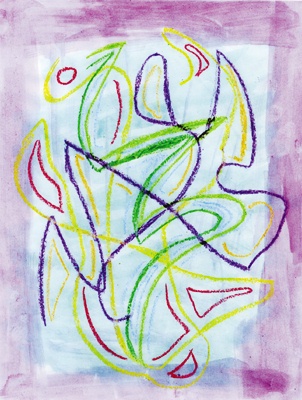All Nonfiction
- Bullying
- Books
- Academic
- Author Interviews
- Celebrity interviews
- College Articles
- College Essays
- Educator of the Year
- Heroes
- Interviews
- Memoir
- Personal Experience
- Sports
- Travel & Culture
All Opinions
- Bullying
- Current Events / Politics
- Discrimination
- Drugs / Alcohol / Smoking
- Entertainment / Celebrities
- Environment
- Love / Relationships
- Movies / Music / TV
- Pop Culture / Trends
- School / College
- Social Issues / Civics
- Spirituality / Religion
- Sports / Hobbies
All Hot Topics
- Bullying
- Community Service
- Environment
- Health
- Letters to the Editor
- Pride & Prejudice
- What Matters
- Back
Summer Guide
- Program Links
- Program Reviews
- Back
College Guide
- College Links
- College Reviews
- College Essays
- College Articles
- Back
Putting the Art in Artificial Intelligence
As we continue to move further and further into the twenty-first century, artificial intelligence and machine learning have become increasingly prevalent in almost every field. Elon Musk believes that machines will surpass humans at everything by 2030. Recent developments in technology have allowed machines to be creative. This is done by using a generative adversarial network (GAN), which is two neural networks working in tandem. Furthermore, Google’s Project Magenta, a “research project to advance the state of the art in machine intelligence for music and art generation,” is revolutionizing the creation of different types of art, from music to comedy.
The new, modified GANs, called creative adversarial networks (CANs), can create works of art that do not match a known style. To train it, 81,449 images were used by 1,119 artists. A study tested to see whether humans could accurately assess if works of art re human-made or machine-made. The results showed that “human test subjects could not distinguish art generated by the [CAN] from art generated by contemporary artists.”
All of this begs the question: can machines make art? Can a machine, a lifeless, brainless thing that runs on not flesh and blood but ones and zeros, produce this quintessentially human thing?
As French philosopher Paul Valéry, who Walter Benjamin quoted at the beginning of his essay “The Work of Art in the Age of Mechanical Reproduction,” wrote in 1931, “We must expect great innovations to transform the entire technique of the arts, thereby affecting artistic invention itself and perhaps even bringing about an amazing change in our very notion of art.” Art, like the technology, changes and evolves. The only thing that can now change is people’s acceptance of computer-generated art and how the art community reacts to this new form.

Similar Articles
JOIN THE DISCUSSION
This article has 0 comments.
